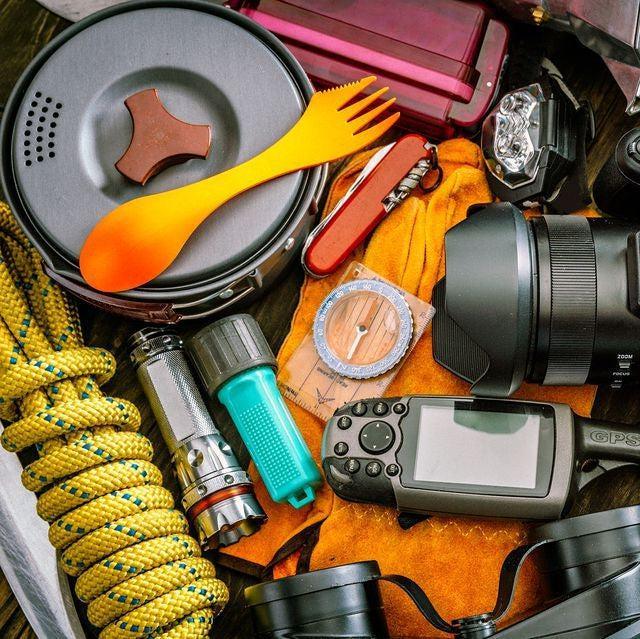
How To Make a Mini Root Cellar In Your Backyard In Less Than Two Hours
Share
Once upon a time, root cellars were the only way people had to preserve their food. These wonderful cold-storage areas became less common when refrigerators became affordable. Houses were no longer automatically built with a root cellar beneath or nearby.
A root cellar is still a great way to store fruits and vegetables, though, especially when you need to store more than you have room for indoors. They will also keep the fruits and vegetables fresh without electricity. If your house doesn’t have one, you can still take advantage of nature’s “ice box.” All it takes is a shovel, a little elbow grease and a trash can.
The Basic Concept
Root cellars are built underground, usually just below the frost line. The ground stays cool at that depth but it does not freeze. Some sort of ventilation allows for air movement to help prevent rot, although the vents are closed for the winter. Vegetables and fruits are kept cool under these conditions but do not freeze. They stay fresh and ready to eat throughout the cold winter months.
The Modern Root Cellar
You don’t have to rent a front-end loader and dig a root cellar to take advantage of nature’s natural food-preserving abilities. A very efficient modern root cellar can be made from a hole in the ground and a container. This type of root cellar is actually a bit of an improvement over the old style. You can have a number of smaller, individual root cellars rather than one big one. Vegetables and fruits can be kept separate and you can just access the root cellar you need. You don’t have to go digging through various vegetables to get the one you want.
What You Will Need:
- Dirt shovel
- Trash can (galvanized steel or plastic)
- Drill or hammer and nail
- Straw
- Rocks
- Plywood

The depth of the hole should be adjusted according to your freeze line or how deep the soil freezes in your area. Be sure to dig deep enough for the can to sit on the rocks at the bottom of the hole and still be at or just below the freeze line.

Place the root cellars in sandy soil and/or in a slightly elevated area. Do not put them where water tends to saturate the ground and does not quickly drain away. You want some humidity but you don’t want the fruits and vegetables to be saturated. Excess water in the bottom of the can will also interfere with proper ventilation. You want to make sure there will be some air movement from the holes in the bottom of the can.

Install separate root cellars for fruits and vegetables. They should not be stored together within the same can, even if they are separated with straw. Fruits give off ethylene which will cause vegetables to ripen and rot. They also cause potatoes to sprout.

Vegetables that Store Well Together
Many vegetables have similar temperature and humidity requirements.
The following can be stored together within the same can at 32 to 40 degrees F/0 to 4 degrees C at 90 to 95% humidity:
- Beets
- Brussels sprouts
- Cabbage
- Carrots
- Cauliflower
- Celery
- Endive
- Horseradish
- Kale
- Leeks
- Turnips
Do not store damaged vegetables but do leave them dirty.
Just brush off most of the dirt. Do not rinse them or wash them. Use damaged fruits and vegetables right away. Bacteria and fungus will quickly take hold on bruised or cut produce.
Store onions in a cool, dry root cellar with temperatures of 32 to 35 degrees F/0 to 1 degree C and 60 to 70% humidity after you shock them. Shock them by bending or snapping the green stems 1 month before harvest. You can store peas with onions.
Regular potatoes and sweet potatoes need to be stored separately. Regular potatoes should be kept at 38 to 40 degrees F/3 to 4 degrees C and 80 to 90% humidity. Sweet potatoes should be kept at 50 to 55 degrees F/10 to 13 degrees C with 80 to 90% humidity.
Dried beans need to be kept cool and dry with temperatures between 32 and 50 degrees F/0 and 10 degrees C in 60 to 70% humidity.
Pumpkins and squash can be stored together in a warm, dry root cellar. Temperatures should be kept between 50 and 55 degrees F/10 and 13 degrees C with 60 to 75% humidity.
Store apples and pears in a cold, moist root cellar with temperatures of 32 to 40 degrees F/0 to 4 degrees C in 80 to 90% humidity.
If you notice your fruits or vegetables beginning to shrivel, the humidity level is too low. Try misting the layers of straw with a little water to increase moisture levels. If there is a little condensation or moisture on the fruits or vegetables, you will need to reduce the humidity in the root cellar. Replace the straw with fresh, dry straw and make sure there isn’t standing water beneath the can. You may have to move the can if there is standing water in the hole.



